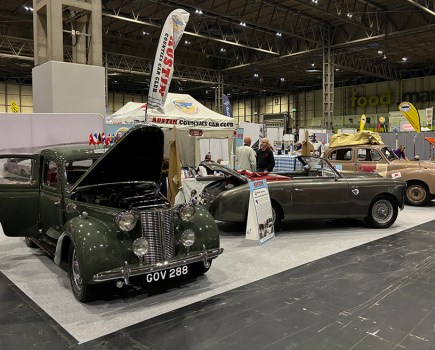The new car market is depressed .A recent survey from Close Brothers Motor Finance reported that 35 per cent of drivers are likely to postpone or hold off from buying a new car due to economic uncertainty.
Some historic names are cutting back; Jaguar Land Rover decided last month not to renew the contracts of 1000 temporary employees at Solihull.
Against this climate, the classic car market seems stronger than ever.
At its Friday, May 4 sale, Dorset based South West Vehicle Auctions (SWVA) achieved a hitherto almost unheard of 95 per cent sale rate, with just four cars left unsold.
It wasn’t a case of ‘pile em high, sell em cheap’ either – that 95 per cent sale rate included many lots which sold for strong prices way over the pre-sale estimates.
Interestingly, the highest prices here were achieved by pre-war cars – a 1930 Lagonda made nearly £90,000 despite being a non-runner and a converted saloon, and a pair of non-running MG PAs of 1931 vintage made £12,600 apiece. Ten years ago, the conventional wisdom was that the pre-war market would contract as those old enough to recall the cars died off; in truth, the reverse has happened
SWVA Managing Director Darren Loveys confirmed the good news: “We are attracting buyers and sellers not just locally, but right across the country”. The key, he said, was getting the right cars; “you need to have the right cars to sell, buyers are extremely knowledgeable and will pay good money for good cars”.
Elsewhere, the outlook for historic vehicle sales remains positive. Retail dealers in classic cars throughout the country are reporting record demand, “selling good cars isn’t hard; the difficult bit is finding decent stock” to quote one well-known and long-established East Anglia-based dealer who asked not to be named. The overall message seems to be that buyers are there, and will pay good money, but only for cars that are right in terms of condition and, where applicable, specification.
For many of today’s buyers, owning a particular classic has been a long-held dream, and a dream purchase really needs to be as close as possible to the actual car you yearned for; a white Jaguar 240 auto saloon may never be quite right if the dream was for a red 3.8 Mk2 with wires and a Moss manual box!
EXPERT OPINION – PETER SIMPSON SENIOR CLASSICS WORLD CONTRIBUTOR
I’m not massively surprised by what’s happening, though thankfully the current boom seems much steadier and more sustainable than the boom in the late Eighties and early Nineties. I was writing about classics then, and recall that most people expected that bubble to pop at some point. This one is slower and steadier, and as such seems likely to be more sustainable.
It is, though, a little misleading to contrast the varying fortunes of the classic and modern car markets as these days the two are totally different. For most people, a modern car is an essential part of life and something we own because we need it. Yes we can choose to buy a better quality car or more interesting one (in the same way as we can choose a smaller or larger house), but the daily use car is still as much a head purchase as a heart one.
It’s also something that it’s known and accepted will be worth a lot less than you paid when you come to sell, and therefore, when people are unsure about their personal economic future, they may well see delaying a planned car change as a relatively easy and low-impact way of cutting outgoings.
A classic, on the other hand, is always a heart purchase. It’s also probably fair to say that the typical classic car owner and enthusiast is rather more insulated from economic uncertainty than most. They have savings which they are keen to preserve, and with interest rates at their present level, an old car (or three) is seen as a viable alternative to putting money in the bank.
In all the circumstances, we really shouldn’t be surprised that the classic car market is doing rather well at present. I’m not expecting any change anytime soon either.








